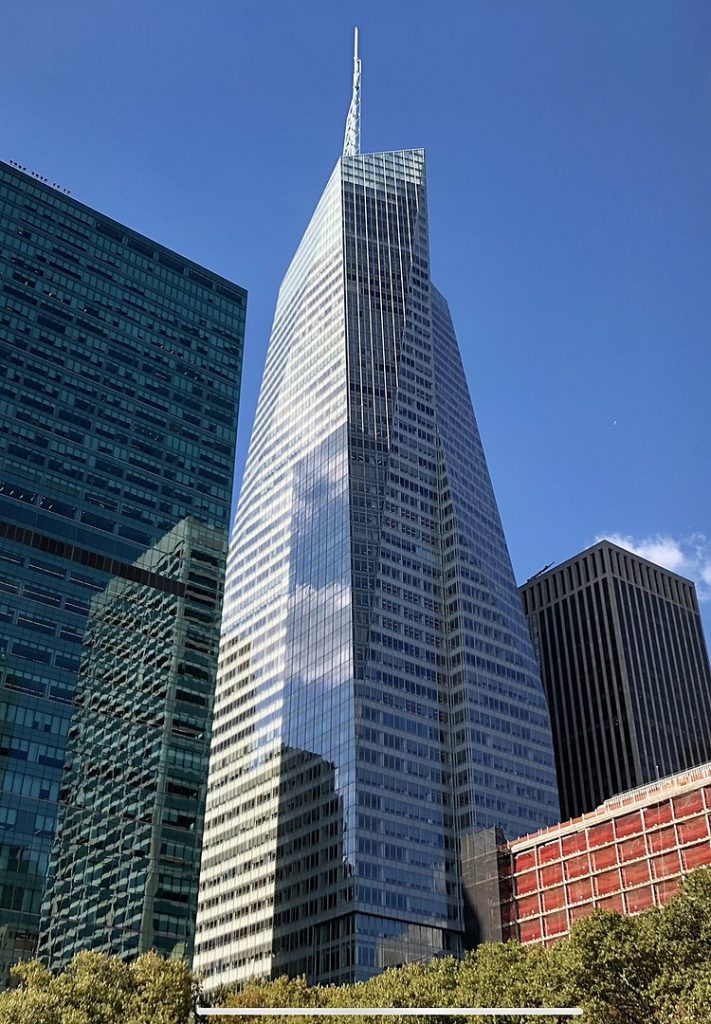
“We need to build more sustainably not just because it’s the right thing to do, but because it’s the only thing to do if we want to create a better future for generations to come.”
-James Wines.
 Growth and development of a community has a direct impact on the environment, its immediate environment and the overall. With all the ill-effects of climate change manifesting themselves around the world, architects have become increasingly aware and are striving to create environmentally responsible buildings. We have been bringing some of the most innovative, path-breaking structures produced during this century that have set new standards in sustainability and energy-efficiency. It’s a pleasure sharing today the details of a very special skyscraper that aims to create a positive social, economic, and environmental impact. So, here we go!
Growth and development of a community has a direct impact on the environment, its immediate environment and the overall. With all the ill-effects of climate change manifesting themselves around the world, architects have become increasingly aware and are striving to create environmentally responsible buildings. We have been bringing some of the most innovative, path-breaking structures produced during this century that have set new standards in sustainability and energy-efficiency. It’s a pleasure sharing today the details of a very special skyscraper that aims to create a positive social, economic, and environmental impact. So, here we go!
The Bank of America Tower, New York:
Rising majestically amidst the bustling streets of New York City, The Bank of America Tower stands as a testament to modern architectural ingenuity. With its sleek design and cutting-edge sustainability features, this skyscraper has redefined the skyline and has set new standards for environmentally conscious construction. The tower was the first high-rise commercial building to achieve LEED Platinum certification. It’s designed with the concept of Biophilia which emphasizes people’s connection to nature through the maximum utilization of daylight and fresh air.
Architectural highlights:
- Design and structure

Designed by the renowned architectural firm Cook-Fox Architects, in collaboration with Adamson Associates Architects, the Bank of America boasts a striking façade characterized by its crystalline form. The tower stands tall at an impressive height of 1200 feet, making it one of the tallest buildings in New York City.
- Floor plan and layout
Spanning an expansive area of 2.2 million square feet, the tower encompasses 55 floors of prime office space. Its efficient floor plan maximizes natural light penetration and offers panoramic views of the city skyline, creating an inspiring work environment for its occupants.
- Structural innovation
The Bank of America Tower employs state-of-the-art structural systems to ensure stability and resilience against the forces of nature. Its steel and concrete composite structure, coupled with advanced damping technologies, enhances the building’s performance and mitigates vibrations caused by wind or seismic activity.
Sustainability features:
- Green building certification
Setting a new standard for sustainable design, the Bank of America Tower has achieved LEED Platinum certification, the highest rating for green buildings. This accolade reflects its commitment to environmental responsibility and energy efficiency.
- Energy-efficient design
The tower incorporates a plethora of energy-saving features, including high-performance glazing, efficient HVAC systems, and LED lighting fixtures. These design features reduce energy consumption significantly, resulting in lower operating costs and minimizing the building’s carbon footprint.
- Water conservation measures
In addition to energy efficiency, the Bank of America Tower prioritizes water conservation through innovative strategies such as rainwater harvesting, and grey water recycling. These measures not only reduce water usage but also alleviate strain on municipal water supplies, contributing to the overall sustainability of the building.
- Green roof and urban habitat
Atop the tower, a lush green roof provides insulation, reduces heat island effect, and creates a habitat for native plant species and pollinators. This green oasis enhances the building’s aesthetic appeal and promotes biodiversity and ecological resilience in the heart of the city.
- Carbon-neutral operations
One of the most notable sustainability features of the Bank of America Tower is its commitment to carbon neutrality. Through a combination of energy-efficient design, renewable energy sources, and carbon offset programs, the tower effectively balances its carbon emissions, making it a model of environmental stewardship in the urban landscape.

- Community engagement and education
Beyond its physical attributes, the Bank of America Tower serves as a catalyst for environmental awareness and education. Through public outreach programs, sustainability tours, and educational initiatives, the tower engages with the community and inspires the individuals to adopt eco-friendly practices in their daily lives.
The Bank of America Tower stands as a shining example of architectural innovation and environmental stewardship. From its striking design to its cutting-edge sustainability features, this skyscraper embodies the intersection of art, technology, and ecology. As cities around the world strive to build greener, more resilient urban environments, the Bank of America Tower serves as a beacon of hope and inspiration for a sustainable future.
We will soon be back with another gem of a building with a commitment to a more sustainable world. Don’t miss the fun!
Sources:
https://peer.asee.org › sustainable-green-features-o…
http://www.greeneducationfoundation.org › case-studies
https://smart-cre.com › Blog
https://www.ierek.com › news › sustainable-architecture-t…
https://en.wikipedia.org › wiki › Bank_of_America_To…

About the Author
Sandeep Singh is an architect from IIT Roorkee. Ten years after graduating, he lost his vision to genetic Diabetes.
He reinvented his career and turned writer.
He has authored two fiction books and writes blogs on Architecture, Outsourcing, Safety and a variety of other subjects for different organizations.
He also chairs and runs two NGOs

Thank you for sharing your insightful thoughts on this topic. They are really welcomed.
What an excellent post! Reading it was really educational for me. You provided extremely well-organized material, and your explanations were both clear and brief. Your time and energy spent on this article’s research and writing are much appreciated. Anyone interested in this topic would surely benefit from this resource.